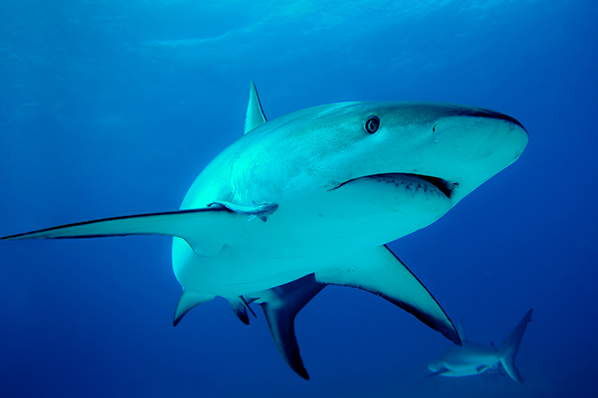
If you’re afraid of spiders, then you have arachnophobia. If horses give you the shivers, then you have equinophobia. If you cringe at the thought of worms, then you have scoleciphobia. What about a fear of sharks? Actually, that would just make you sensible. The official classification of a fear of sharks is galeophobia from the Greek “galeos,” which roughly translated means “swimming fish machine of death.” That might be a slight embellishment. Although we might be afraid of sharks, we certainly have a fascination with the creatures. Any movie trailer that shows a fin in the water can guarantee box office gold. Over on the Discovery Channel, they’ve devoted a week to nothing but sharks for years. If you’re going anywhere near the ocean, then you’ll want to load you up on everything you need to know about sharks. Always good to go into the waters as an expert.
What Makes A Shark?
At last count, there are around 465 distinct species of sharks roaming the seas. Among the most recognizable are the bull shark, the hammerhead, the mako, the whale shark and the great white. A shark’s skeleton is made of cartilage as opposed to bone. That makes them way more flexible and lighter to glide through the ocean. Every shark species have multiple rows of teeth. Anytime a tooth is knocked out, new teeth grow in. There will never be a chance for a toothless shark. Oddly enough, with all those teeth sharks don’t chew their food. Sure, they’ll chomp out a bite but that bite goes down the gullet whole.
A shark’s diet consists of pretty much anything they find when they’re hungry. Nothing that is in the water is safe from a shark. You might be surprised to find out that sharks have an acute sense of smile. This lets them sniff out blood from miles away. A shark can live up to 30 years with the giant whale shark living to be around 100. As for a shark’s bite, they can chomp down at 40,000 pounds per square inch of pressure. Translation: don’t get bit.
The Great White
Now discussion of sharks can be complete without attention being paid to the great white shark. This is the largest predator in the deep blue sea. Great white sharks have been spotting along the coasts of every continent with the exception of Antarctica. Clearly, they don’t like the cold. Over the course of a year, a great white shark can eat up to 11 tons of food. The record for biggest great white shark stands at 20 feet. It was caught back in 1933 just off of Prince Edward Sound.
Most researchers agree that when a great white shark attacks a human in the water, it’s because they are mistaking them for their regular prey. This is often why someone can survive an attack by a great white; the shark will stop the attack when they realize they’ve made a mistake. In other words, great white sharks don’t like the taste of people. A small measure of comfort should come from the fact that great white sharks aren’t 100% safe. If they happen upon an orca whale, then say good-bye to the great white.
What is the closest you’ve ever come to a shark?

